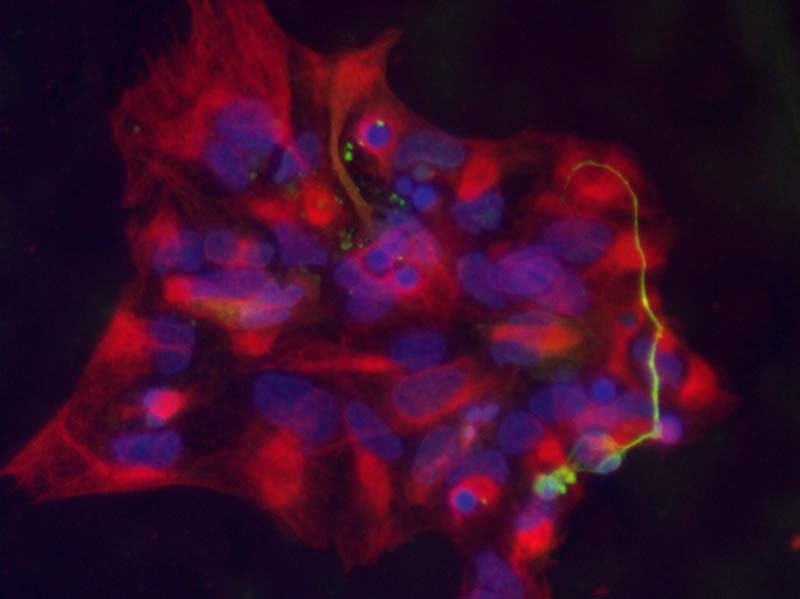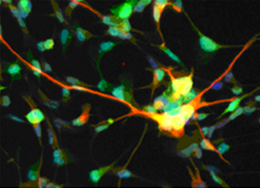Project Area 7:
Control of stem cell growth and differentiation for functional neural tissue engineering
The therapeutic potentials of embryonic stem cells and neural stem cells are immense. Their regenerative potential has made them the ideal candidates for neural tissue engineering where the marriage of neural stem cells and engineered scaffold has become a promising research direction for treating brain injuries and degenerative diseases. We first seek to develop a technology platform that can be used to study material-neural stem cell interaction with a specific emphasis on the neurogenesis and functional integration. We hypothesize that the stem cell fate can be influenced by the engineered substrate, specifically via the surface characteristics, controlled release of soluble factors and electrical stimulation; combinations of these stimuli may promote neural stem cells to differentiate into functional neurons at desired locations and orientations, which is important for functional repair. Electroactive conducting polymers based nano-composites are developed to build various surfaces for neural stem cells to grow on. The unique properties of these polymers allow us to systematically change their surface characteristics, to release soluble factors at a high spatial and temporal resolution and to apply electrical stimuli. Two in vivo projects have studied the therapeutic effects of neural stem cells. First project tests the hypothesis that a layer of stem cells seeded on neural probes could reduce the foreign body reaction to implanted neural probes. Neural stem cells were cultured on protein modified neural probe surfaces. The cell seeded probes implanted in the rat cortex showed greatly reduced astrogliosis compared to the uncoated. In a traumatic brain injury (TBI) model, we found that the delivery of NSCs in extracellular matrix materials improve the tissue repair and functional outcome.


Example publications include:
- Ling Zhang, William R. Stauffer, Esther P. Jane, Paul J. Sammak and Xinyan Tracy Cui, Enhanced Differentiation of Embryonic and Neural Stem Cells to Neuronal Fates on Laminin Peptides Doped Polypyrrole, Macromol Biosci, 2010. 10(12): p. 1456-1464.
- Erdrin Azemi, Glenn Gobbel, Xinyan Tracy Cui, Seeding Neural Progenitor Cells on Silicon Based Neural Probes, Journal of Neurosurgery, 2010, 113: pages 673-681
- L. Zhang, F. Zhang, Z. Weng, B. N. Brown, H. Yan, X. M. Ma, P. S. Vosler, S. F. Badylak, C. E. Dixon, X. T. Cui*, and J. Chen*, Effect of an inductive hydrogel composed of urinary bladder matrix upon functional recovery following traumatic brain injury. Tissue engineering. Part A, 2013. 19(17-18): p. 1909-18. *:co-corresponding author
- Cassandra Weaver, X. Tracy Cui, Directed Neural Stem Cell Differentiation with a Functionalized Graphene Oxide Nanocomposite, Advanced Healthcare Material, 2015, Article first published online: 5 MAY 2015, DOI: 10.1002/adhm.201500056